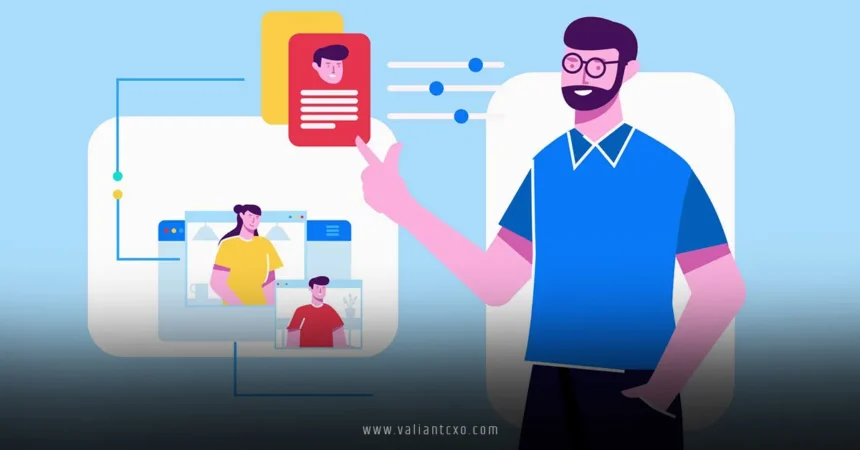Customer Experience (CX) and Personalization are no longer just buzzwords—they’re the backbone of thriving businesses in today’s hyper-competitive world. Imagine walking into a coffee shop where the barista knows your name, remembers your usual order, and even suggests a new drink based on your taste. That warm, tailored experience makes you feel valued, right? That’s the magic of Customer Experience (CX) and Personalization working together. In this article, we’ll dive deep into why these two concepts are critical, how they intertwine, and how businesses can leverage them to build loyalty and drive growth. Ready to explore? Let’s get started!
What is Customer Experience (CX) and Personalization?
Customer Experience (CX) is the sum of every interaction a customer has with a brand—from browsing a website to chatting with customer service to unboxing a product. It’s how a customer feels at every touchpoint. Personalization, on the other hand, is the art of tailoring those interactions to fit the individual’s preferences, behaviors, and needs. Think of CX as the stage and personalization as the spotlight that makes each customer feel like the star of the show.
When combined, Customer Experience (CX) and Personalization create a powerful synergy. A great CX ensures customers enjoy their journey, while personalization makes that journey feel uniquely theirs. For example, Netflix doesn’t just offer a great streaming platform (CX); it curates movie suggestions based on your viewing history (personalization). This duo is what keeps customers coming back for more.
Why Does Customer Experience (CX) and Personalization Matter?
In a world where customers have endless choices, standing out is tougher than ever. Did you know that according to Salesforce, 80% of customers say the experience a company provides is as important as its products or services? That’s huge! If your CX isn’t top-notch or your personalization feels generic, customers will bolt to a competitor faster than you can say “unsubscribe.”
Customer Experience (CX) and Personalization matter because they build trust and loyalty. When customers feel understood, they’re more likely to stick around, spend more, and even recommend your brand to others. It’s like planting a seed: nurture it with personalized care, and it’ll grow into a loyal customer base.
The Building Blocks of Customer Experience (CX) and Personalization
Creating a stellar Customer Experience (CX) and Personalization strategy isn’t about throwing darts in the dark. It requires a clear plan, data-driven insights, and a sprinkle of creativity. Let’s break down the key components.
1. Understanding Your Customers
You can’t personalize without knowing who your customers are. It’s like trying to bake a cake without knowing the ingredients. Start by collecting data—demographics, purchase history, browsing behavior, and feedback. Tools like CRM systems or analytics platforms can help you paint a vivid picture of your audience.
For instance, an online retailer might notice that a customer frequently buys eco-friendly products. By using this data, they can personalize the CX with tailored product recommendations or emails highlighting sustainable brands. This level of Customer Experience (CX) and Personalization shows customers you’re paying attention to what matters to them.
2. Seamless Omnichannel Experiences
Customers interact with brands across multiple channels—social media, websites, apps, physical stores, and more. A strong CX ensures these touchpoints feel connected. Imagine ordering online and picking up in-store, only to find the staff has no clue about your order. Frustrating, right? An omnichannel approach ensures consistency, while personalization tailors each channel to the customer’s preferences.
Take Starbucks as an example. Their app lets you order ahead, customize your drink, and earn rewards based on your habits. Whether you’re ordering via the app or visiting a store, the experience feels cohesive, and the personalization keeps you hooked.
3. Leveraging Technology for Personalization
Technology is the secret sauce behind Customer Experience (CX) and Personalization. Artificial intelligence (AI), machine learning, and data analytics allow businesses to predict customer needs and deliver tailored experiences at scale. For example, Amazon’s recommendation engine uses AI to suggest products based on your browsing and purchase history. It’s like having a personal shopper who knows your taste inside out.
But technology isn’t just for big players. Small businesses can use tools like email marketing platforms to send personalized offers or chatbots to provide instant, tailored support. The key is choosing tools that align with your goals and enhance the overall CX.
4. Emotional Connection Through Storytelling
People don’t just buy products—they buy stories. Personalization in CX isn’t just about data; it’s about weaving a narrative that resonates. When a brand shares its values or tailors its messaging to reflect a customer’s journey, it creates an emotional bond. Customer Experience (CX) and Personalization thrive when customers feel like they’re part of something bigger.
Think about a fitness brand sending a motivational email with a customer’s name, celebrating their progress. That small touch can turn a transactional relationship into a meaningful one.
How to Implement Customer Experience (CX) and Personalization in Your Business
Now that we’ve covered the “why” and “what,” let’s talk about the “how.” Implementing Customer Experience (CX) and Personalization doesn’t have to be overwhelming. Here’s a step-by-step guide to get you started.
Step 1: Map the Customer Journey
Every customer’s journey is unique, but there are common touchpoints—awareness, consideration, purchase, and post-purchase. Map these out to identify where personalization can make the biggest impact. For example, during the consideration phase, personalized product recommendations can nudge a customer toward a purchase. Post-purchase, a thank-you email with tailored tips on using the product can enhance the CX.
Step 2: Invest in the Right Tools
From CRMs like HubSpot to analytics tools like Google Analytics, the right tech stack is crucial. These tools help you collect and analyze data to deliver personalized experiences. For instance, an e-commerce store might use a tool like Shopify’s analytics to track customer behavior and offer personalized discounts.
Step 3: Train Your Team
Your team is the face of your CX. Train them to understand the importance of Customer Experience (CX) and Personalization and empower them to make decisions that delight customers. A well-trained team can turn a complaint into a loyal customer with a single thoughtful interaction.
Step 4: Test and Iterate
Personalization isn’t a one-and-done deal. Test different approaches—maybe A/B test email subject lines or try different recommendation algorithms. Use customer feedback to refine your strategy. The goal is to keep improving the CX while making personalization feel natural, not forced.
The Benefits of Mastering Customer Experience (CX) and Personalization
When done right, Customer Experience (CX) and Personalization can transform your business. Here are some of the biggest benefits:
Increased Customer Loyalty
Personalized experiences make customers feel valued, which builds loyalty. A loyal customer is like a friend who keeps coming back to your party—they trust you and spread the word.
Higher Conversion Rates
Personalization drives sales. According to studies, personalized CTAs (calls-to-action) can boost conversions by up to 202%. When customers see products or offers tailored to their needs, they’re more likely to hit that “buy” button.
Better Customer Retention
It’s cheaper to keep an existing customer than to find a new one. A strong CX with personalized touches reduces churn and keeps customers coming back. Think of it like tending a garden—regular care keeps the flowers blooming.
Competitive Advantage
In a crowded market, Customer Experience (CX) and Personalization set you apart. A brand that makes customers feel special stands out like a beacon in a sea of generic competitors.
Challenges in Delivering Customer Experience (CX) and Personalization
Of course, it’s not all smooth sailing. Implementing Customer Experience (CX) and Personalization comes with its hurdles.
Data Privacy Concerns
Customers love personalization, but they also value privacy. With regulations like GDPR and CCPA, businesses must tread carefully. Be transparent about how you use data and give customers control over their information. It’s like walking a tightrope—balance personalization with respect for privacy.
Resource Constraints
Small businesses might struggle with the budget or expertise needed for advanced personalization. But you don’t need a huge budget to make a difference. Start small with personalized emails or targeted social media ads and scale up as you grow.
Avoiding Over-Personalization
Too much personalization can feel creepy. Ever get an ad that’s too specific? It’s like someone reading your diary. Find the sweet spot where personalization feels thoughtful, not intrusive.
Real-World Examples of Customer Experience (CX) and Personalization Done Right
Let’s look at a few brands nailing Customer Experience (CX) and Personalization:
- Spotify: Their “Discover Weekly” playlist uses data to curate songs tailored to each user’s taste, making the listening experience feel uniquely personal.
- Amazon: From product recommendations to personalized emails, Amazon’s CX is a masterclass in using data to enhance personalization.
- Nike: Nike’s app offers customized workout plans and product suggestions based on your fitness goals, creating a seamless and personalized CX.
These brands show that Customer Experience (CX) and Personalization, when executed well, can turn casual customers into raving fans.
The Future of Customer Experience (CX) and Personalization
What’s next for Customer Experience (CX) and Personalization? The future is exciting! AI and machine learning will get even smarter, enabling hyper-personalized experiences in real-time. Imagine a virtual assistant that anticipates your needs before you even voice them. Augmented reality (AR) could also take CX to new heights—think trying on clothes virtually with personalized style recommendations.
But as technology evolves, the human touch will remain crucial. Customers want to feel understood, not just analyzed. The brands that succeed will blend cutting-edge tech with genuine empathy to create unforgettable experiences.
Conclusion: Why You Should Prioritize Customer Experience (CX) and Personalization
Customer Experience (CX) and Personalization are more than just strategies—they’re the heart of building meaningful connections with your customers. By understanding your audience, leveraging technology, and creating seamless, tailored experiences, you can turn one-time buyers into lifelong advocates. The journey to mastering CX and personalization might have its challenges, but the rewards—loyalty, higher sales, and a competitive edge—are worth it. So, what’s stopping you? Start small, experiment, and watch your customers fall in love with your brand.
FAQs
1. What is the difference between Customer Experience (CX) and Personalization?
Customer Experience (CX) is the overall journey a customer has with a brand, while personalization tailors that journey to the individual’s preferences. Together, Customer Experience (CX) and Personalization create a unique and engaging interaction.
2. How can small businesses implement Customer Experience (CX) and Personalization?
Small businesses can start with affordable tools like email marketing platforms or CRMs to collect data and offer personalized offers. Training staff to prioritize CX also makes a big difference.
3. Why is data important for Customer Experience (CX) and Personalization?
Data helps businesses understand customer preferences, behaviors, and needs, allowing them to deliver tailored experiences. Without data, personalization would be a shot in the dark.
4. Can too much personalization harm Customer Experience (CX)?
Yes, over-personalization can feel intrusive and turn customers off. Striking a balance is key to ensuring Customer Experience (CX) and Personalization feel thoughtful, not creepy.
5. What role does technology play in Customer Experience (CX) and Personalization?
Technology like AI, machine learning, and analytics enables businesses to analyze data and deliver personalized experiences at scale, enhancing the overall CX.
For More Updates !! : valiantcxo.com


